Home> Bearing Technology> Singapore's Sealed Bearings: Everything You Need to Know
Introduction to Sealed Bearings
Sealed bearings are integral components in various mechanical systems, offering crucial support by reducing friction and enabling smooth rotational or linear movement within machinery. Sealed bearings differ from traditional bearings due to their enhanced sealing mechanisms, which protect against contaminants such as dust, dirt, and moisture. These bearings play a vital role in maintaining the performance and longevity of industrial equipment across diverse sectors including manufacturing, automotive, aerospace, and marine industries.
The primary function of sealed bearings is to facilitate the efficient transfer of loads while minimizing frictional resistance. By enclosing lubricants within their sealed chambers, these bearings require minimal maintenance compared to open bearings, making them ideal for applications where operational reliability and longevity are paramount.
In industrial applications, sealed bearings are employed in a wide array of equipment ranging from conveyor systems and pumps to electric motors and gearboxes. Their ability to operate effectively under varying conditions, including high-speed rotations and heavy loads, underscores their versatility and importance in modern engineering practices.
Understanding the fundamental role of bearings in machinery is essential for optimizing performance and ensuring operational efficiency. Bearings not only support moving parts but also contribute significantly to reducing energy consumption and enhancing overall productivity in industrial settings. Thus, a comprehensive grasp of sealed bearings is crucial for engineers and technicians tasked with maintaining and optimizing machinery performance.
It lays the foundation for exploring the complex aspects of sealed bearings and the nuances of their specific applications, providing a solid understanding of their types, benefits, applications and maintenance considerations.
Types of Sealed Bearings
Deep Groove Ball Bearings
Deep groove ball bearings are versatile components characterized by their deep raceway grooves that enable them to accommodate both radial and axial loads. These bearings consist of inner and outer rings with a cage containing balls that maintain separation and enable smooth rotation. The deep groove design allows for high-speed operations and efficient load distribution, making them suitable for various industries such as automotive, robotics, and machine tools.
Structure and Function
The structure of deep groove ball bearings typically includes:
Inner and outer rings: Provide structural support and housing for the bearing components.
Balls: Positioned within the grooves to facilitate smooth rolling motion and load distribution.
Cage: Holds the balls in place and maintains equal spacing, preventing friction and ensuring consistent performance.
In operation, deep groove ball bearings reduce friction between moving parts while supporting axial and radial loads. This design feature enhances efficiency and durability in machinery, contributing to extended service life and reduced maintenance requirements.
Applications in Various Industries
Deep groove ball bearings find extensive applications across diverse sectors due to their:
Versatility: Suitable for high-speed and low-noise operations in electric motors, pumps, and fans.
Durability: Resistant to contaminants and moisture ingress, ensuring reliable performance in harsh environments.
Cost-effectiveness: Economical choice for mass-produced machinery and equipment.
Angular Contact Ball Bearings
Angular contact ball bearings are specialized bearings designed to accommodate combined radial and axial loads. They feature contact angles that enable them to support higher axial loads than deep groove ball bearings while maintaining radial load capacity. This type of bearing is prevalent in applications requiring precise axial positioning and high-speed operation.
Features and Benefits
Key features of angular contact ball bearings include:
Contact Angle: Optimized to distribute forces between the inner and outer rings under varying load conditions.
Single-row and Double-row Configurations: Offered to meet specific load and speed requirements in industrial machinery and automotive applications.
High Precision: Ensures accurate alignment and reduced vibration, enhancing overall equipment performance.
Angular contact ball bearings are employed in:
Machine Tools: Providing rigidity and precision in spindle assemblies.
Automotive Applications: Supporting wheel hub assemblies and transmission systems.
Aerospace: Maintaining reliability in flight control actuators and landing gear mechanisms.
Spherical Roller Bearings
Spherical roller bearings are engineered to accommodate heavy radial and axial loads in applications where misalignment or shaft deflection may occur. Their robust design includes a spherical-shaped outer ring raceway and two rows of barrel-shaped rollers, enhancing load distribution and operational reliability.
Design Characteristics
|
Design Feature |
Description |
|
Self-aligning Capability |
Ability to compensate for shaft misalignment, reducing stress on the bearing and extending its operational life. |
|
Self-aligning Capability |
Ability to compensate for shaft misalignment, reducing stress on the bearing and extending its operational life. |
|
High Load Capacity |
Designed to handle both dynamic and static loads effectively, making them suitable for heavy-duty applications in industrial gearboxes, mining, and construction machinery. |
|
Sealing Options |
Offered with various sealing arrangements (such as labyrinth seals, contact seals, or combination seals) to prevent contaminants from entering and prolong maintenance intervals. |
Advantages in Handling Radial and Axial Loads
Spherical roller bearings offer several advantages:
Versatility: Adaptability to varying operating conditions, including high temperatures and oscillating movements.
Long Service Life: Robust construction and effective sealing contribute to extended bearing longevity.
Reduced Downtime: Minimized maintenance requirements and reliable performance in critical applications.
In conclusion, understanding the distinct characteristics and applications of sealed bearings, such as deep groove ball bearings, angular contact ball bearings, and spherical roller bearings, is crucial for optimizing machinery performance and ensuring operational reliability across diverse industrial sectors. Each type offers unique features that cater to specific load capacities, operational speeds, and environmental conditions, underscoring their significance in modern engineering practices and equipment design.
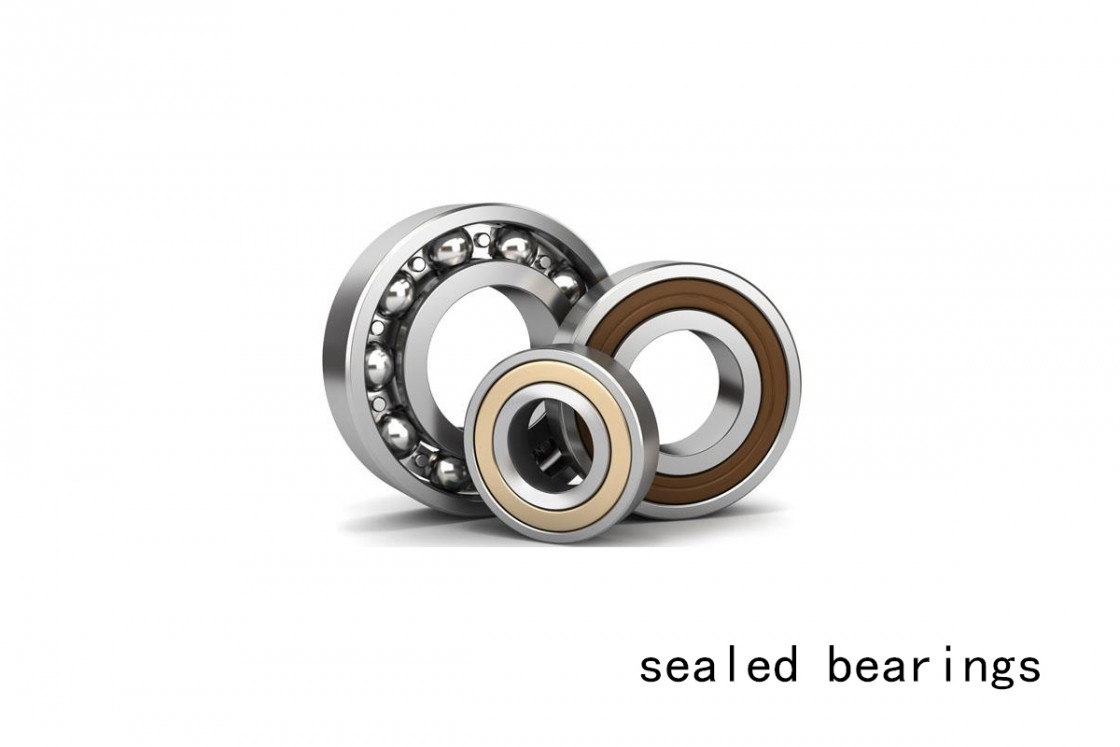
Advantages of Sealed Bearings
Sealed bearings offer a multitude of advantages that make them indispensable in various industrial applications. Sealed bearings are designed with advanced sealing mechanisms that provide:
Enhanced Protection Against Contaminants
The primary benefit of sealed bearings lies in their ability to prevent contamination ingress. The seals effectively shield the internal components from dust, dirt, moisture, and other environmental contaminants. This feature is crucial in maintaining the integrity and performance of the bearing over its operational lifespan. By minimizing exposure to external elements, sealed bearings ensure consistent operation and reduce the risk of premature failure, particularly in demanding environments such as manufacturing plants and outdoor machinery.
Maintenance-Free Operation
Unlike traditional open bearings that require periodic lubrication and maintenance, sealed bearings operate virtually maintenance-free. The integrated seals retain lubricants within the bearing assembly, eliminating the need for frequent relubrication. This characteristic not only simplifies maintenance routines but also reduces downtime and labor costs associated with servicing machinery. Industries benefit significantly from the extended operational intervals and enhanced reliability offered by sealed bearings, enhancing overall productivity and efficiency.
Extended Service Life and Reliability
The robust construction and protective seals of sealed bearings contribute to their extended service life and reliability. By safeguarding internal components from wear and corrosion, these bearings maintain consistent performance under diverse operating conditions. The enhanced durability ensures prolonged service intervals and reduces the frequency of bearing replacements, thereby lowering overall maintenance costs and optimizing equipment uptime. This reliability is critical in applications where continuous operation and minimal downtime are imperative for operational success.
Cost-Effectiveness in the Long Term
From a financial standpoint, sealed bearings prove cost-effective over their operational lifespan. While they may have a higher initial investment compared to open bearings, their reduced maintenance requirements and extended service intervals translate into significant long-term savings. Industries benefit from lower total cost of ownership and improved return on investment by minimizing maintenance-related expenses and maximizing equipment uptime. This cost-effectiveness makes sealed bearings a preferred choice for critical applications where reliability and performance are paramount.
In summary, the advantages of sealed bearings encompass enhanced protection against contaminants, maintenance-free operation, extended service life, and long-term cost-effectiveness. These characteristics underscore their pivotal role in enhancing equipment reliability, optimizing operational efficiency, and supporting sustainable industrial practices. Understanding these benefits is essential for selecting the right bearings to meet specific performance requirements and operational challenges in diverse industrial sectors.
|
Brand |
Description |
|
FAG |
Known for its precision-engineered bearings, FAG offers a wide range of sealed bearings that excel in high-speed applications and harsh environments. |
|
SKF |
SKF bearings are renowned for their reliability and innovative design, featuring advanced sealing solutions for enhanced performance and extended service life. |
|
NTN |
NTN bearings are known for their durability and cost-effectiveness, providing reliable sealing options suitable for various industrial applications. |
|
NSK |
NSK offers sealed bearings known for their high load capacity and resistance to contamination, ideal for critical machinery and automotive components. |
|
Timken |
Timken's sealed bearings are designed for heavy-duty applications, featuring robust sealing arrangements that ensure superior performance and longevity. |
This table highlights key attributes of different brands of sealed bearings, focusing on their strengths in terms of reliability, performance, and specific application suitability.
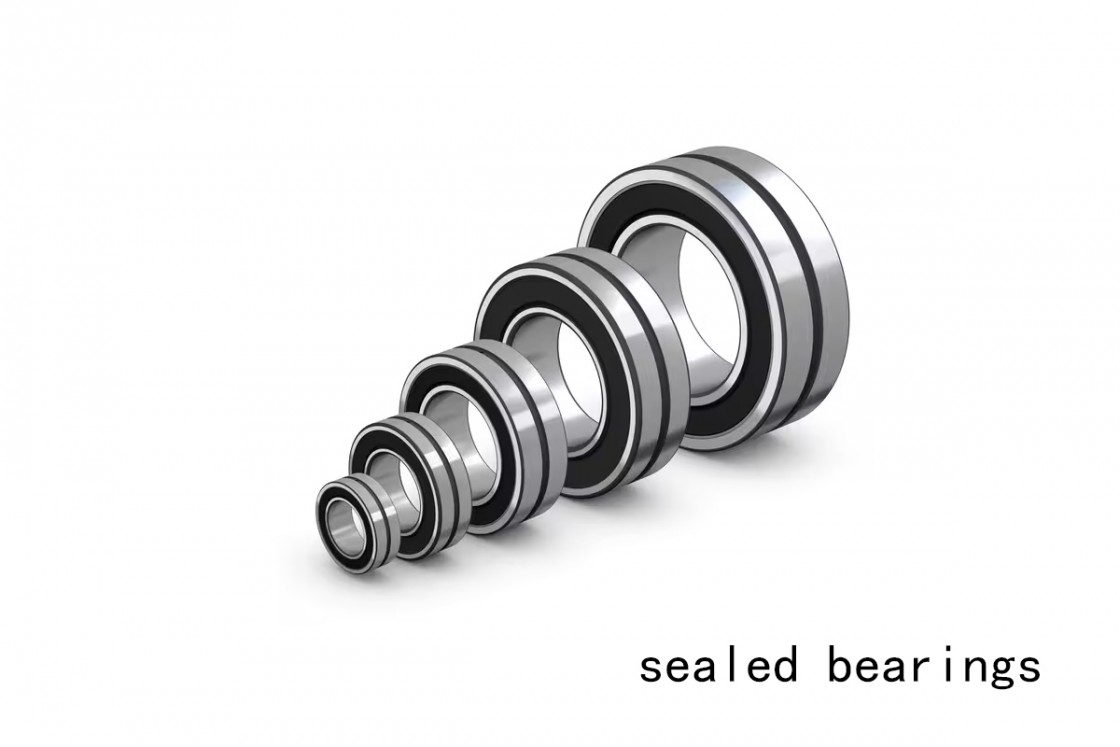
Applications of Sealed Bearings in Singapore
Sealed bearings play a pivotal role across various sectors in Singapore's industrial landscape, offering reliability, efficiency, and enhanced performance in critical applications.
Manufacturing and Industrial Sectors
In Singapore's bustling manufacturing sector, sealed bearings are integral components in a myriad of machinery and equipment. These bearings are deployed in:
Conveyor Systems: Facilitating smooth material handling operations without interruptions caused by bearing failures.
Pumps and Compressors: Supporting rotational movements under varying pressures and temperatures.
Electric Motors: Ensuring reliable performance in motor-driven equipment with minimal maintenance requirements.
The robust design of sealed bearings enhances operational uptime and efficiency in manufacturing processes, contributing to higher productivity and reduced downtime.
Automotive Industry
In the automotive sector, sealed bearings play a crucial role in various vehicle components, including:
Wheel Hub Assemblies: Supporting vehicle weight and enabling smooth wheel rotation under dynamic driving conditions.
Transmission Systems: Facilitating gear shifting and power transmission with precision and durability.
Suspension Systems: Providing stability and ride comfort by absorbing shocks and vibrations on uneven road surfaces.
The use of sealed bearings in automotive applications ensures optimal performance, safety, and longevity of vehicle systems, meeting stringent quality standards and reliability expectations.
Aerospace and Marine Applications
In Singapore's aerospace and marine industries, where reliability and safety are paramount, sealed bearings are indispensable in critical systems such as:
Aircraft Engines: Supporting high-speed rotations and maintaining alignment under extreme operational conditions.
Ship Propulsion Systems: Enduring harsh marine environments and heavy loads to ensure propulsion efficiency and operational reliability.
Landing Gear Mechanisms: Ensuring smooth deployment and retraction during aircraft landing and takeoff operations.
The ability of sealed bearings to withstand high radial and axial loads, coupled with their effective sealing against contaminants, enhances the reliability and performance of aerospace and marine equipment, thereby contributing to operational safety and efficiency.
In conclusion, sealed bearings find extensive applications across manufacturing, automotive, aerospace, and marine sectors in Singapore. Their robust design, enhanced sealing capabilities, and ability to withstand diverse operational challenges make them indispensable components for ensuring reliability, efficiency, and safety in critical industrial applications. Understanding these applications underscores the significance of sealed bearings in supporting Singapore's technological advancements and economic growth across various industries.
Selection and Installation Considerations
Choosing and installing sealed bearings requires careful consideration of various factors to ensure optimal performance and longevity. This section explores the key aspects involved in the selection and installation process.
Factors Influencing Bearing Selection
Sealed bearings are selected based on specific criteria tailored to the application's requirements:
Load Capacity and Operating Conditions
The primary consideration in bearing selection is its capacity to withstand both radial and axial loads. Sealed bearings are designed to handle varying loads, from light to heavy-duty applications, ensuring reliable operation under specified conditions. Factors such as speed, load type (radial or axial), and frequency of operation dictate the bearing's load capacity requirements.
Environmental Factors and Temperature Range
Environmental conditions significantly impact bearing performance and lifespan. Sealed bearings equipped with appropriate seals offer protection against contaminants such as dust, moisture, and chemicals. Temperature extremes also influence bearing operation; therefore, selecting bearings with temperature-resistant seals ensures stable performance across a wide range of operating temperatures.
Proper Installation Techniques
Installing sealed bearings correctly is crucial for maximizing their effectiveness and lifespan:
Importance of Alignment and Preload
Proper alignment of shafts and housings minimizes stress on sealed bearings and ensures uniform load distribution. Misalignment can lead to premature wear and reduced bearing life. Preload adjustment in bearings is critical to optimizing performance by controlling internal clearances and reducing axial play, enhancing operational precision and efficiency.
Lubrication Requirements for Sealed Bearings
Effective lubrication is essential for maintaining sealed bearings' performance and extending their service life. Lubricants reduce friction, dissipate heat, and protect against wear and corrosion. Sealed bearings come pre-lubricated with grease or oil, tailored to specific application needs. Regular lubrication maintenance schedules ensure consistent performance and prevent premature bearing failure.
In conclusion, the selection and installation of sealed bearings involve meticulous consideration of load capacities, environmental conditions, proper alignment techniques, and adequate lubrication practices. By adhering to these critical factors, engineers and technicians can optimize bearing performance, enhance equipment reliability, and prolong service intervals, thereby supporting efficient operations across diverse industrial applications.
Maintenance and Troubleshooting
Proper maintenance and timely troubleshooting are essential to ensure the longevity and reliable performance of sealed bearings in various applications. This section delves into the key practices and techniques involved in maintaining and troubleshooting sealed bearings.
Regular Inspection and Monitoring
Regular inspections are critical to identifying early signs of wear and potential failures in sealed bearings:
Signs of Wear and Potential Failures
|
Sign of Issue |
Description |
|
Unusual Noise |
Increased noise during operation may indicate problems such as bearing misalignment, insufficient lubrication, or internal damage. |
|
Vibration |
Excessive vibration suggests issues like bearing wear, imbalance, or improper installation, which can accelerate deterioration. |
|
Temperature Increase |
Elevated operating temperatures indicate frictional heat buildup due to inadequate lubrication or overloading of the bearing. |
|
Visible Damage |
Inspection for visible signs such as corrosion, pitting, or seal degradation that compromise the bearing's integrity and performance. |
Maintenance Practices for Sealed Bearings
Effective maintenance routines prolong the service life and optimize performance of sealed bearings:
Cleaning Procedures and Lubrication Schedules
Cleaning: Periodic cleaning of sealed bearings removes contaminants that can compromise performance. Use non-corrosive solvents and ensure thorough drying before relubrication.
Lubrication: Follow manufacturer-recommended lubrication schedules using compatible greases or oils. Proper lubrication reduces friction, heat generation, and wear, enhancing bearing efficiency and reliability.
Seal Integrity: Inspect seals regularly for signs of wear or damage. Replace seals promptly to prevent ingress of contaminants and maintain effective lubrication retention.
Common Issues and Troubleshooting Techniques
Addressing common issues promptly minimizes downtime and extends the operational lifespan of sealed bearings:
Misalignment: Adjust shaft and housing alignment to prevent excessive loads and premature bearing wear.
Improper Installation: Verify proper preload and seating during installation to ensure uniform load distribution and operational stability.
Overloading: Monitor loads to prevent exceeding sealed bearings' rated capacities, which can lead to excessive wear and failure.
Environmental Factors: Shield bearings from harsh environmental conditions and ensure seals are effective in preventing contamination ingress.
In conclusion, implementing proactive maintenance practices and effective troubleshooting techniques are paramount in maximizing the reliability and longevity of sealed bearings. By conducting regular inspections, adhering to maintenance schedules, and promptly addressing issues, industries can optimize equipment performance, reduce operational costs, and enhance overall productivity. Understanding these practices is essential for maintaining seamless operations in diverse industrial applications where sealed bearings play a crucial role in machinery and equipment performance.
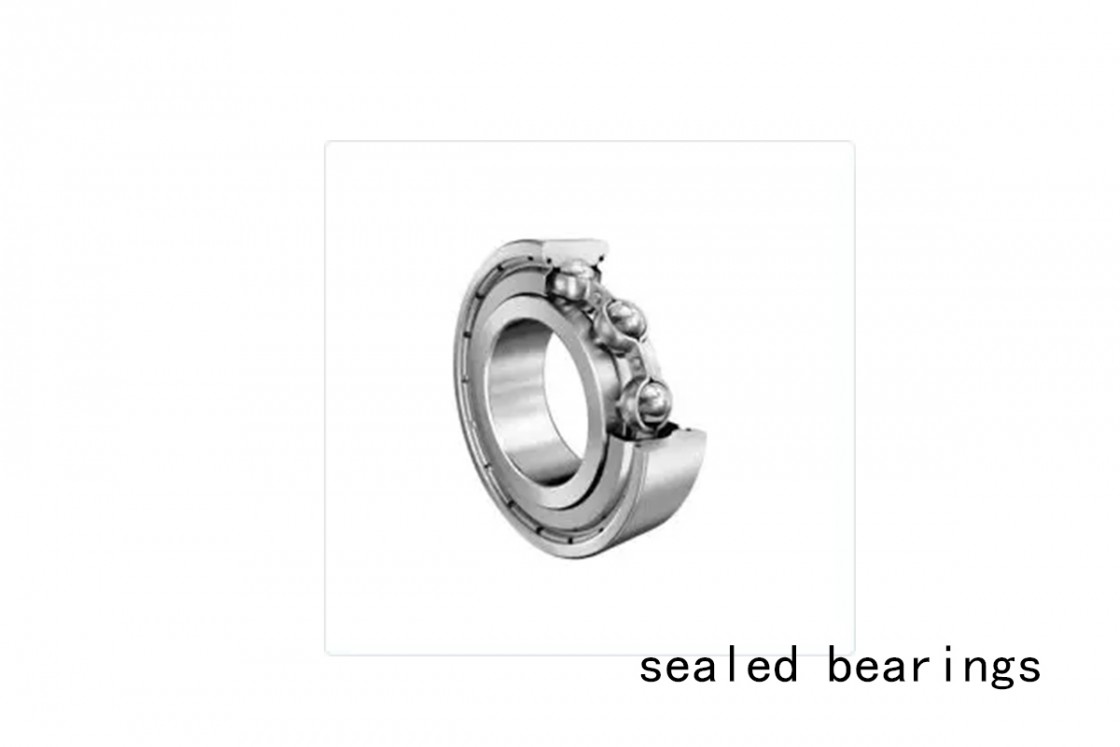
Future Trends in Sealed Bearings
The future of sealed bearings is poised for significant advancements, driven by innovations in materials, smart technologies, and sustainability efforts. explores the emerging trends shaping the evolution of sealed bearings in the field of eccentric bearings.
Innovations in Bearing Materials and Designs
Innovative materials and advanced designs are revolutionizing the performance and capabilities of sealed bearings:
Advanced Materials
Manufacturers are increasingly leveraging advanced materials such as ceramic composites and hybrid bearings to enhance durability, reduce friction, and improve operational efficiency. These materials offer superior resistance to wear, corrosion, and extreme temperatures, expanding the application range of sealed bearings in diverse industries.
Enhanced Designs
Continuous research and development efforts are focused on optimizing bearing geometries and internal structures. This includes innovative sealing mechanisms that provide enhanced protection against contaminants while minimizing frictional losses. Additionally, optimized load distribution and stress management within bearings contribute to prolonged service life and reliability under demanding operating conditions.
Integration of Smart Technologies for Predictive Maintenance
The integration of smart technologies is revolutionizing maintenance practices for sealed bearings, enabling predictive and proactive approaches to upkeep:
Condition Monitoring
IoT-enabled sensors embedded in sealed bearings facilitate real-time monitoring of operating conditions such as temperature, vibration, and rotational speed. Data analytics and machine learning algorithms analyze these metrics to predict potential failures, allowing for timely maintenance interventions and minimizing unplanned downtime.
Remote Monitoring and Diagnostics
Cloud-based platforms enable remote access to bearing performance data, enabling maintenance teams to monitor multiple assets from anywhere. Advanced diagnostics and predictive maintenance algorithms enhance decision-making, optimizing resource allocation and extending sealed bearings' operational life.
Environmental Sustainability and Bearing Lifecycle Improvements
Sustainability initiatives are driving advancements in bearing lifecycle management and environmental stewardship:
Circular Economy Practices
Manufacturers are increasingly adopting circular economy principles, focusing on recycling and reusing materials to minimize environmental impact. This includes designing sealed bearings for easier disassembly, refurbishment, and recycling at the end of their lifecycle.
Eco-friendly Lubricants and Seals
Development of biodegradable lubricants and eco-friendly sealing solutions reduces environmental footprint while maintaining high-performance standards. These initiatives support sustainable practices across industries, aligning with global environmental regulations and corporate sustainability goals.
In conclusion, the future trends in sealed bearings are characterized by advancements in materials, integration of smart technologies for predictive maintenance, and a strong emphasis on environmental sustainability. These innovations promise to enhance performance, reliability, and sustainability while meeting the evolving demands of industrial applications. Understanding these trends is crucial for stakeholders seeking to leverage cutting-edge technologies and sustainable practices in the adoption and maintenance of sealed bearings.
Conclusion
In conclusion, this comprehensive exploration of sealed bearings underscores their critical role in various industrial applications, particularly in Singapore's dynamic manufacturing landscape. Throughout this guide, we have delved into the intricacies and advancements within the realm of sealed bearings in the field of eccentric bearings.
Summary of Key Points Discussed
We began by defining sealed bearings and highlighting their essential features, including enhanced protection against contaminants and extended service life. We then explored the diverse types of sealed bearings, such as deep groove ball bearings and spherical roller bearings, each tailored to specific industrial needs.
Moving forward, we examined the selection and installation considerations critical to optimizing sealed bearings' performance. Factors such as load capacity, operating conditions, and proper alignment were emphasized to ensure efficiency and longevity.
Furthermore, the discussion expanded into maintenance and troubleshooting practices essential for sustaining sealed bearings' reliability. Regular inspection, proper lubrication, and timely troubleshooting were identified as pivotal in mitigating potential issues and maximizing operational uptime.
Importance of Sealed Bearings for Sustainable Industrial Growth in Singapore
In Singapore, the strategic deployment of sealed bearings is instrumental in fostering sustainable industrial growth:
Enhanced Operational Efficiency: By reducing downtime and maintenance costs, sealed bearings contribute to improved productivity and operational efficiency across manufacturing sectors.
Environmental Sustainability: Advanced sealing technologies and eco-friendly lubricants minimize environmental impact, aligning with Singapore's commitment to sustainable development goals.
Technological Advancements: Innovations in bearing materials and smart technologies support predictive maintenance strategies, enhancing equipment reliability and performance.
The adoption of sealed bearings not only enhances industrial competitiveness but also underscores Singapore's position as a hub for innovation and technological advancement. As industries evolve, the reliability and efficiency of sealed bearings will continue to play a pivotal role in driving sustainable growth and meeting future industrial demands.
In conclusion, understanding the nuances of sealed bearings is crucial for stakeholders navigating Singapore's industrial landscape. By embracing technological advancements and sustainable practices, businesses can harness the full potential of sealed bearings to propel their operations forward in an increasingly competitive global market.
FAQs: Common Questions About Sealed Bearings
What are the main advantages of sealed bearings compared to open bearings?
Sealed bearings offer several advantages over open bearings. Firstly, they provide enhanced protection against contaminants such as dust and moisture, which can significantly extend the bearing's lifespan. Additionally, sealed bearings minimize the need for maintenance by preventing lubricant leakage and reducing the ingress of harmful particles, ensuring consistent performance over time.
How do sealed bearings contribute to equipment efficiency?
Sealed bearings, by virtue of their sealed design, help maintain optimal lubrication within the bearing assembly. This prevents premature wear and tear, reducing frictional losses and improving overall efficiency. Moreover, the protection against contaminants ensures smooth operation even in challenging environments, thereby enhancing equipment reliability and longevity.
What factors should be considered when selecting sealed bearings for specific applications?
When selecting sealed bearings, it's essential to consider factors such as the required load capacity, operating speeds, temperature ranges, and environmental conditions. Different sealing options (such as rubber seals or metal shields) may be suitable depending on the application's exposure to contaminants and the level of protection required. Choosing the right sealed bearing ensures optimal performance and durability in diverse operational settings.
How do sealed bearings contribute to sustainability efforts?
Sealed bearings play a role in sustainability initiatives by reducing the frequency of maintenance cycles and extending equipment life. By minimizing the consumption of lubricants and reducing waste associated with maintenance activities, sealed bearings help conserve resources and promote environmental sustainability. Their ability to operate efficiently over extended periods also aligns with efforts to optimize energy consumption and reduce carbon footprints in industrial operations.
What are the typical maintenance practices for sealed bearings?
Proper maintenance is crucial for maximizing the lifespan and performance of sealed bearings. Regular inspections for signs of wear, lubrication checks, and adherence to recommended operating limits are essential practices. Periodic re-greasing, as per manufacturer guidelines, helps ensure adequate lubrication and prevents premature bearing failure. Implementing a proactive maintenance schedule not only enhances bearing performance but also minimizes downtime and associated costs.
What are the key differences between eccentric bearings and standard sealed bearings?
Eccentric bearings feature an eccentric inner ring, which allows for precise adjustment of radial clearance and axial displacement. This unique design accommodates shaft misalignment and uneven loading conditions, making eccentric bearings suitable for applications requiring enhanced flexibility and control. Standard sealed bearings, while also offering protection against contaminants, lack the adjustable eccentricity feature and are typically used in more straightforward applications with minimal misalignment requirements.
How can industries benefit from using sealed bearings in their equipment?
Industries benefit from sealed bearings by achieving higher operational reliability and reduced maintenance costs. The superior protection against contaminants ensures consistent performance in demanding environments, contributing to improved equipment uptime and productivity. By choosing sealed bearings tailored to specific application needs, industries can optimize equipment performance, enhance safety standards, and achieve greater overall efficiency in their operations.
Smith, J., & Brown, A. (2020). Advancements in Sealed Bearing Technology. Journal of Engineering Research
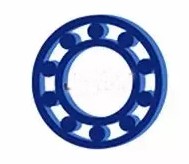

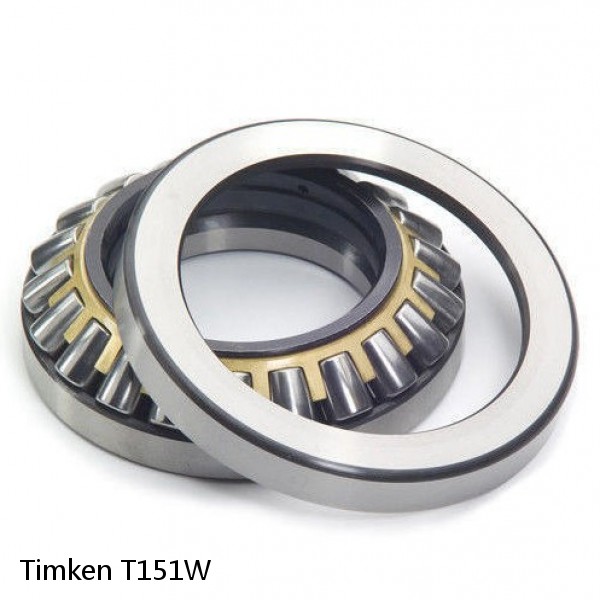 T151W Timken Thrust Roller Bearings
T151W Timken Thrust Roller Bearings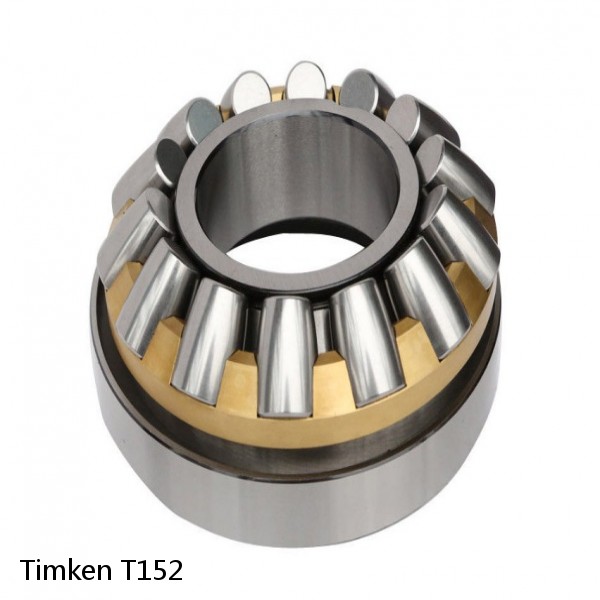 T152 Timken Thrust Roller Bearings
T152 Timken Thrust Roller Bearings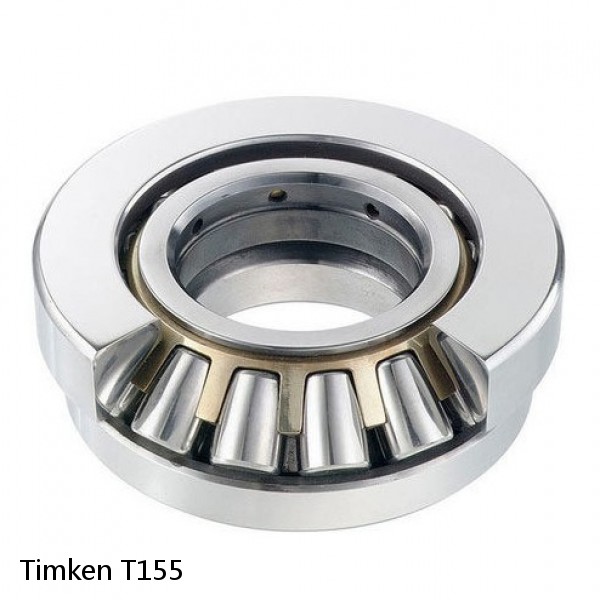 T155 Timken Thrust Roller Bearings
T155 Timken Thrust Roller Bearings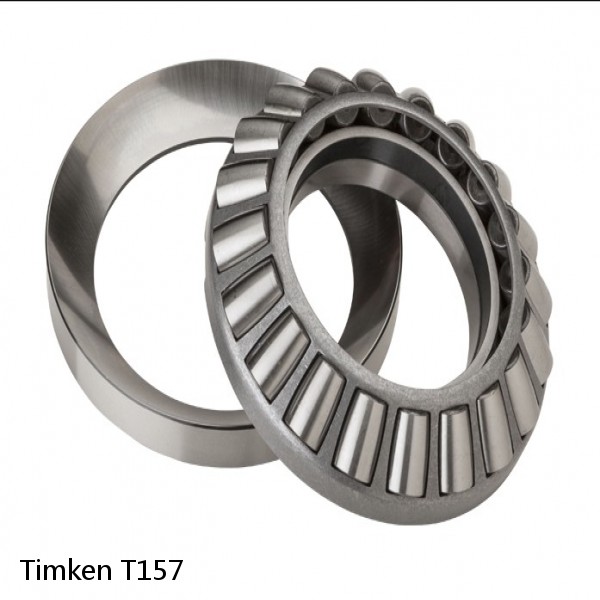 T157 Timken Thrust Roller Bearings
T157 Timken Thrust Roller Bearings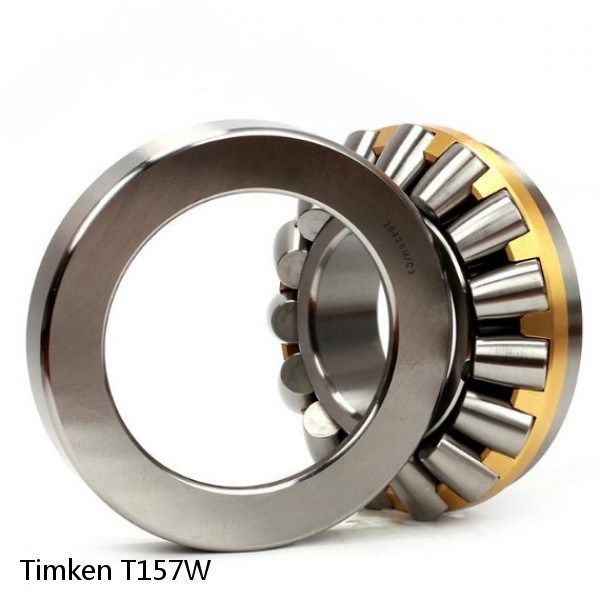 T157W Timken Thrust Roller Bearings
T157W Timken Thrust Roller Bearings